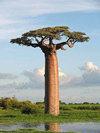文章标题西番莲分布与变异的新认识
IF 0.6
4区 生物学
Q4 PLANT SCIENCES
引用次数: 1
摘要
直到最近,人们才从两个植物标本馆的标本中了解到西番莲。2008年、2009年和2017年在法属圭亚那进行的三次植物考察,极大地提高了我们对其地理分布和形态变异的认识。本文给出了桂亚那月桂属植物的分类目录。由于原始描述中提到的全型缺失,我们提出了一个从经典位点收集的新型。本文章由计算机程序翻译,如有差异,请以英文原文为准。
New insights into the distribution and variation of Passiflora cerasina Annonay & Feuillet
ABSTRACT Until recently, Passiflora cerasina was known only from two herbarium specimens. Three botanical expeditions in French Guiana, in 2008, 2009, and 2017, have greatly improved our knowledge on its geographical distribution and morphological variation. A key to the Guianese species of series Laurifoliae is given. As the holotype mentioned in the original description is missing, we propose a neotype collected from the locus classicus.
求助全文
通过发布文献求助,成功后即可免费获取论文全文。
去求助
来源期刊

Adansonia
生物-植物科学
CiteScore
1.30
自引率
12.50%
发文量
24
审稿时长
>12 weeks
期刊介绍:
Adansonia is a fast-track and peer-reviewed journal of plant biology, devoted to the inventory, analysis and interpretation of vascular plants biodiversity. It publishes original results, in French or English, of botanical research, particularly in systematics and related fields: morphology, anatomy, biology, ecology, phylogeny, biogeography, etc. All articles published in Adansonia are compliant with the different nomenclatural codes. A copyright assignment will be signed by the authors before publication.
 求助内容:
求助内容: 应助结果提醒方式:
应助结果提醒方式:


